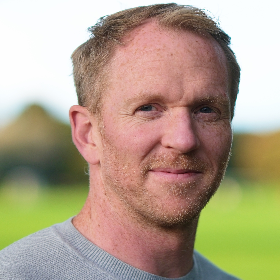GUEST POST
Navigating the Transition from GCSE to A-level Mathematics

Alright, so you've tackled GCSE maths, and now A-level awaits. Let's break down the shift in skill and understanding you have lying ahead of you.
Studying A-level math isn't just a journey through memorising formulas; it's a gateway to understanding and unlocking the mysteries of the real world. Let's take a look at the step up in knowledge you should expect as well as the real-world wonders made possible by the very topics you’ll be exploring.
Numbers Grow Up:
In GCSE, numbers were straightforward. Now, they take on new roles, like logarithms. Instead of:

we’re looking at:

It's just a different way of expressing things.
Expanding further, logarithms become essential in solving exponential equations and understanding how numbers can be scaled logarithmically. This concept becomes a key player as you dive into more complex problem-solving scenarios.
Beyond the classroom, the logarithmic wonders of A-level math find applications in fields as diverse as biology, physics, and finance. In biology, logarithmic scales help us make sense of pH levels in the human body or measure the intensity of earthquakes on the Richter scale. From the microscopic to the seismic, logarithms quietly govern our understanding of the natural world.
Trigonometry Unveils Radians:
GCSE trigonometry uses degrees; A-level opts for radians. The SOH-CAH-TOA approach remains, but now angles are measured differently. Imagine switching from miles to kilometers—it's still about distance, just a different unit.
In A-level, this transition includes delving into the unit circle, where trig functions become more closely connected with geometry. Understanding the intricacies of radians lays the foundation for more advanced trigonometric concepts, essential for tackling real-world problems involving waves, oscillations, and more.
Whether you're studying the motion of planets or the behavior of light waves, trigonometry becomes the language through which we decipher the intricate dance of the cosmos.
Calculus Becomes Routine:
Differential calculus, once about slopes, is now about finding the derivative, representing rates of change. Integrals, the inverse of derivatives, calculate areas under curves. For example, finding the area under:

from 0 to 2 becomes:

It's just a more sophisticated way of solving ‘area under the curve’ problems when more complicated curve formulas start appearing in your exam questions.
As you progress, the applications of calculus become broader. Differential equations, for instance, enter the scene, enabling you to model and analyse phenomena like population growth, radioactive decay, and economic trends.
In the real world, differential calculus becomes the backbone of physics, engineering, and even economics. Engineers use calculus to design everything from bridges that can withstand the forces of nature to ships that can break through ice.
Physicists deploy it to model the behaviour of particles hurtling through accelerators at near-light speeds while programmers can create powerful computer simulations that assist the research of scientists. Even in the stock market, calculus helps financial analysts understand the dynamics of changing prices and make informed predictions.
Matrices Take Center Stage:
Matrices move from the shadows to the spotlight. No longer just arrays, they help solve systems of equations and transform shapes. It's like upgrading from a basic tool to a versatile one.
In A-level, matrix transformations become a focal point. You'll explore how matrices can stretch, rotate, and reflect shapes, laying the groundwork for understanding transformations.
In computer graphics, matrices transform simple shapes into intricate visual masterpieces, giving life to video game landscapes and CGI in movies. Meanwhile, in the secretive world of cryptography, matrices become the guardians of secure communication, ensuring that messages remain unintelligible to prying eyes.

Complex Numbers Enter the Scene:
Real numbers hit their limits, so we introduce complex numbers. 'i,' where:

opens new possibilities of understanding. This may take a while to get your head around but will soon make sense when you treat it like any other number before it. It's not rocket science; it's just expanding the toolkit.
Beyond the basics, complex numbers become indispensable in electrical engineering, signal processing, and quantum mechanics. They provide a powerful tool for solving problems that were once considered unsolvable with real numbers alone. See how they were invented in this short video by Sherpa!
The World of Proof:
Moving from problem-solving to proof requires a shift in mindset. Induction and deduction become your tools and you are asked in exams to prove, through careful calculation and working, how you know an equation or identity is true from first principles.
For example, proving the sum of the first ‘n’ positive integers is equal to:

involves logical steps without pulling an assumption from any other established mathematical rule. It's less about accepting facts and more about understanding why they're true.
Digging deeper into proof methods, you'll encounter proof by contradiction, contrapositive, and learn to construct rigorous arguments.
This lays the groundwork for more advanced mathematical reasoning and has enabled the scientific community to be able to constructively work towards a better understanding of our world through proving and disproving theories.
Navigating the Transition
Transitioning to A-level math is about embracing the challenge and really nailing those skills you learned in GCSE every single time as you start to use them as the building blocks of more advanced problems. One of the easiest ways to do that is just through repetition of old GCSE topics and fundamentals. Every concept builds on what you've learned, adding depth.
It's not a leap into the unknown but a step towards a more nuanced and applied understanding. So, take it in your stride, remember the fundamentals and let's navigate this together!
Students

Hamilton B
Tutor
Realise your full potential in GCSE and A-Level Maths!
Looking for a tutor?
Sherpa has hundreds of qualified and experienced UK tutors who are ready to help you achieve your goals. Search through our tutors and arrange a free 20 minute introduction through our industry-leading online classroom.
Find a TutorSimilar Articles




